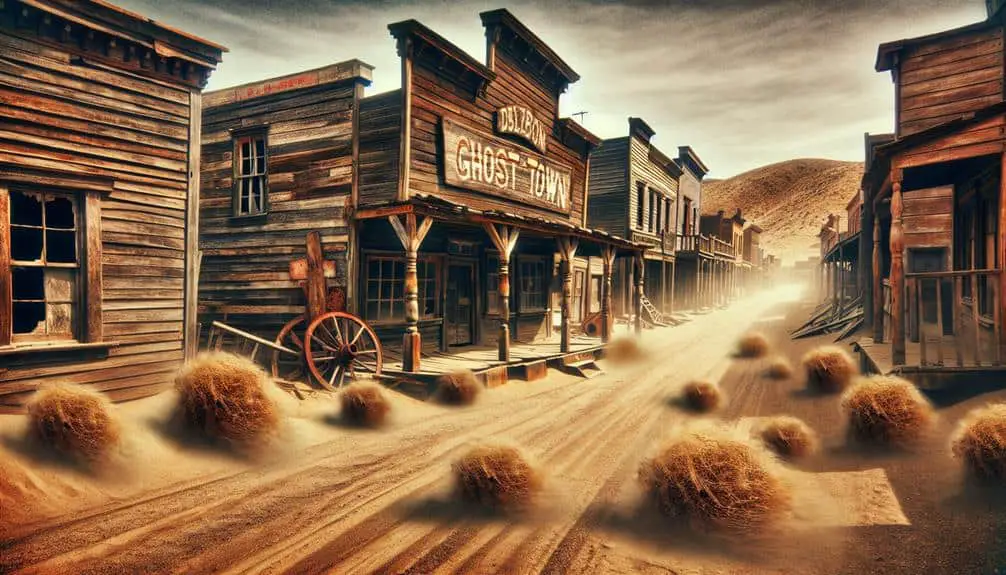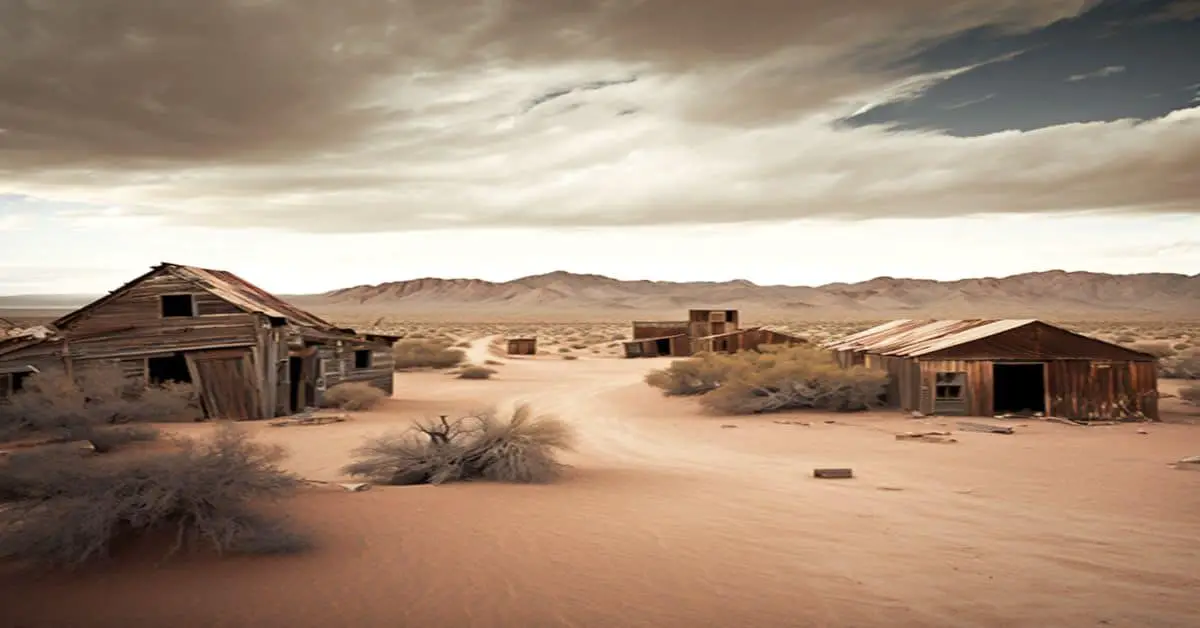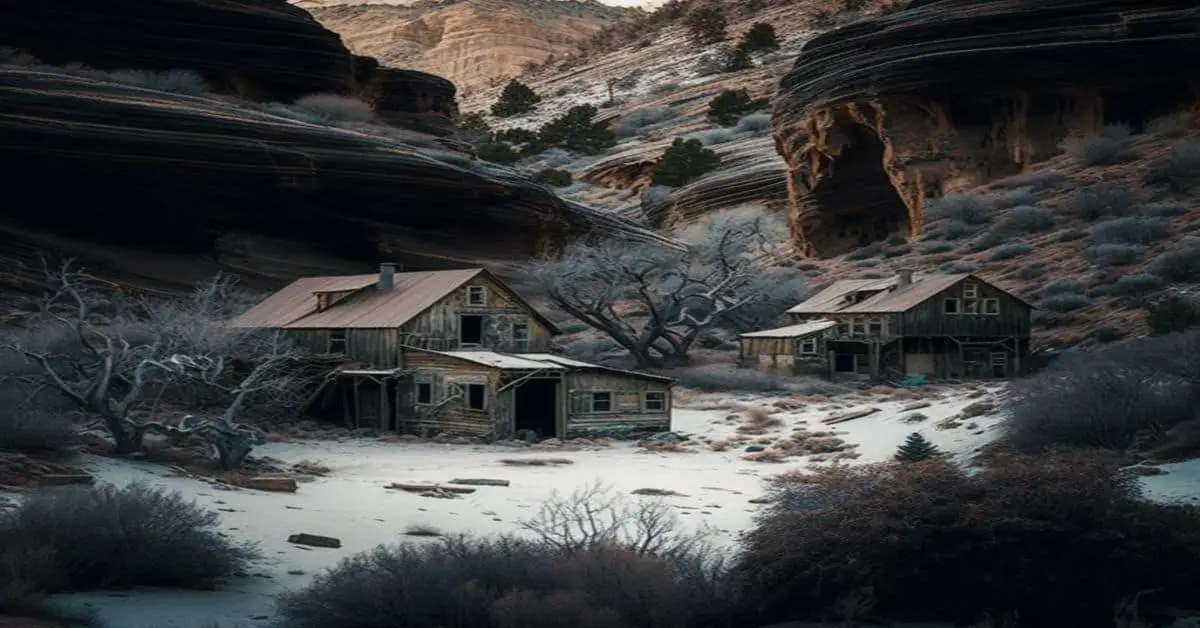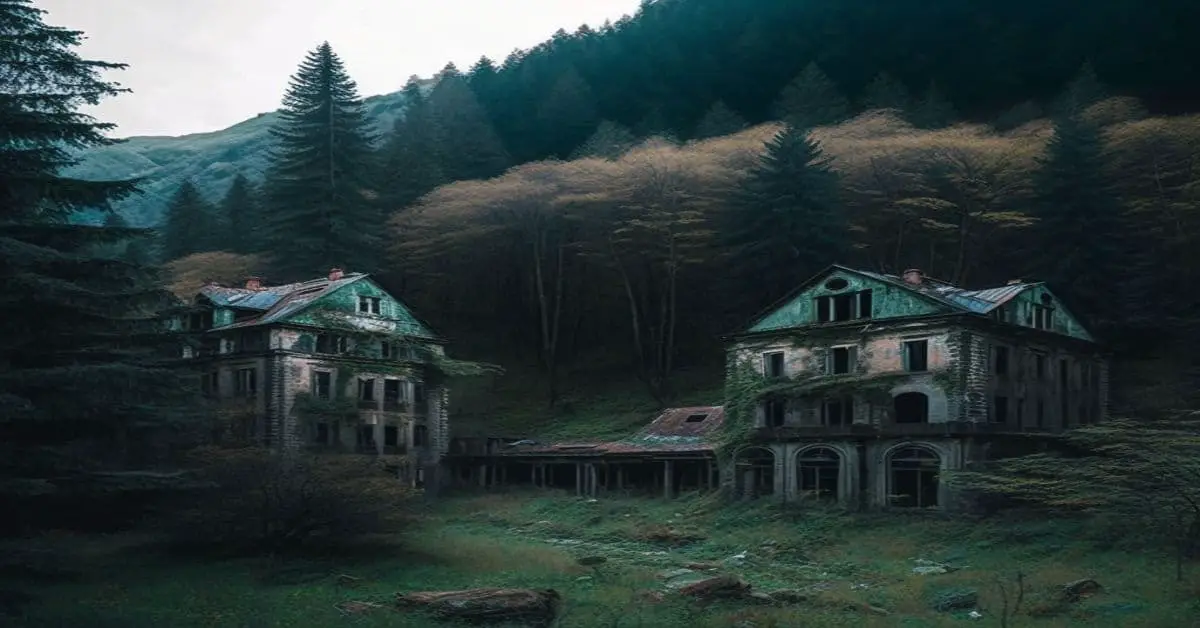Explore the remnants of the Gold Rush era in California through 10 abandoned towns. Sierra City offers ghost town tours with old mining structures to explore. Bodie State Historic Park showcases a preserved gold mining town frozen in time. Cerro Gordo in the Inyo Mountains is steeped in ghost town lore with abandoned buildings telling its story. North Bloomfield maintains its Gold Rush past with preservation efforts. Panamint City in the Panamint Range is a haunting reminder of abandoned mines. These ghostly relics hold tales of resilience and determination during the hunt for gold. Uncover more about their fascinating history.
Key Points
- Sierra City: Offers ghost town tours in the Sierra Nevada Mountains.
- Bodie State Historic Park: Preserves a gold mining town frozen in time.
- Cerro Gordo: Represents the silver mining industry with ghost town lore.
- North Bloomfield: Features one of the largest hydraulic mines from the Gold Rush era.
- Panamint City: Abandoned mining town in the Panamint Range showcasing resilience of early miners.
Sierra City
Sierra City, nestled in the Sierra Nevada Mountains, was once a bustling hub during the California Gold Rush. Its mining history dates back to the mid-1800s when prospectors flocked to the area in search of fortune. The town flourished with the discovery of gold, attracting settlers and businesses looking to capitalize on the booming industry.
Today, Sierra City stands as a testimony to its rich past, offering visitors a glimpse into its former glory through ghost town tours. These tours provide a unique opportunity to explore the remnants of old mining structures, abandoned homes, and other historical sites that paint a vivid picture of life during the Gold Rush era.
As you wander through the streets of Sierra City, you can almost hear the echoes of the past, imagining the hustle and bustle of miners seeking their fortunes in the rugged terrain. The town's preserved buildings and artifacts serve as a reminder of the hardships and triumphs that shaped this once-thriving community. For those with a thirst for adventure and a love of history, Sierra City's ghost town tours offer a fascinating journey back in time.
Bodie State Historic Park
Nestled in the eastern Sierra Nevada mountains of California, Bodie State Historic Park offers a glimpse into the preserved remains of a once-booming gold mining town. This ghost town, frozen in time, stands as a proof to the mining history that shaped the region. As you wander through Bodie, you'll encounter deserted buildings that whisper tales of a bygone era. The town's historical significance lies in its well-preserved state, allowing visitors to step back in time and envision the hustle and bustle of the gold rush days.
Walking down Bodie's dusty streets, you can almost hear the echoes of miners seeking their fortunes and the clinking of gold-filled pans. The park's authenticity and the sheer number of structures left untouched make it a unique destination for history enthusiasts and adventurers alike. From the abandoned homes to the old schoolhouse, every building in Bodie tells a story of resilience and the pursuit of prosperity in the rugged wilderness of California's gold country.
Cerro Gordo
Located high in the Inyo Mountains of California, Cerro Gordo stands as a symbol of the once-thriving silver mining industry in the region. The town, now a ghost town, holds a rich history of mining activities and the remnants of its past can still be seen in the mining ruins scattered across the landscape.
Here are some intriguing aspects of Cerro Gordo:
- Mining Ruins: The town is dotted with old mining structures, such as the American Hotel, the bunkhouse, and the hoist house, offering a glimpse into the techniques and equipment used during the silver rush era.
- Ghost Town Lore: Cerro Gordo is steeped in ghost town lore, with stories of gunfights, mining accidents, and the harsh conditions faced by miners adding to its mystique and allure.
- Abandoned Buildings: The town is home to several abandoned buildings, including the general store, the assay office, and the cemetery, each telling a silent tale of the bustling town that once was.
North Bloomfield
When exploring North Bloomfield, you'll uncover a rich history tied to the California Gold Rush era. Abandoned structures dotting the landscape offer a peek into the town's past, inviting you to dig deeper into its fascinating story.
Today, preservation efforts aim to maintain the authenticity and heritage of North Bloomfield for future generations to appreciate.
North Bloomfield History
What significant events shaped the history of North Bloomfield in California during the Gold Rush era?
North Bloomfield, nestled in the Sierra Nevada foothills, played an important role during the Gold Rush.
- Mining Techniques:
The town thrived due to hydraulic mining, an innovative method that involved directing high-pressure water at hillsides to reveal gold deposits.
- Historical Significance:
North Bloomfield was home to one of the largest hydraulic mines, the Malakoff Mine, which operated from 1852 to 1884, producing substantial amounts of gold.
- Environmental Impact:
The extensive hydraulic mining in North Bloomfield led to significant environmental degradation, contributing to sedimentation in rivers and harming wildlife habitats, ultimately resulting in the banning of hydraulic mining in 1884.
Abandoned Structures Exploration
Amidst the remnants of North Bloomfield's once bustling gold rush activity lie abandoned structures waiting to be explored, offering a glimpse into the town's past.
Exploring the ruins reveals a treasure trove of historical architecture, showcasing the craftsmanship and ingenuity of the time. From dilapidated wooden cabins to rusted mining equipment, each structure whispers stories of the past, inviting you to unravel the town's narrative.
As you walk through these abandoned buildings, the creaking floors and weathered walls transport you back to a bygone era, where dreams of striking it rich fueled the town's growth. Engaging with these relics of history allows you to immerse yourself in the spirit of North Bloomfield's former glory, revealing a deeper understanding of its place in the California Gold Rush.
Preservation Efforts Today
Efforts to preserve the historic structures in North Bloomfield continue to play an essential role in maintaining the town's rich heritage.
- Historical Significance: Preservation efforts focus on protecting the unique architecture and artifacts that reflect the town's Gold Rush history.
- Conservation Efforts: Ongoing initiatives aim to restore and maintain structures to guarantee they stand the test of time and continue to educate future generations.
- Cultural Heritage, Community Involvement: The community actively participates in fundraising events, volunteer programs, and educational workshops to safeguard North Bloomfield's cultural legacy and foster a sense of ownership among residents.
Panamint City
Nestled within the rugged mountains of the Panamint Range lies the ghost town of Panamint City, a haunting reminder of California's Gold Rush era. Panamint City, once a bustling mining town, now stands abandoned, offering a unique opportunity for ghost town exploration. The town's historical significance is evident in the remnants of old buildings and mining equipment scattered across the landscape, providing a glimpse into the past.
For those intrigued by the stories of the Gold Rush and the rugged lifestyle of early miners, Panamint City offers a chance to immerse oneself in history. Walking through the deserted streets and abandoned structures, visitors can feel the echoes of a bygone era. The town's isolation and the surrounding panoramic views add to its allure, making it a fascinating destination for adventurous souls.
Exploring Panamint City allows you to witness firsthand the resilience and determination of those who sought their fortunes in the harsh desert landscape. As you wander through the remnants of this once-thriving town, you can't help but marvel at the tenacity of the people who called Panamint City home.
Hornitos
Perched on the rugged hills of California lies Hornitos, a forgotten relic of the Gold Rush era waiting to be explored. This ghost town, once bustling with miners seeking their fortunes, now stands as a tribute to a bygone era. As you wander through the streets of Hornitos, you'll encounter:
- Historic Architecture: The town boasts well-preserved adobe buildings that whisper tales of the past. From the old saloons to the abandoned homes, each structure holds a piece of history waiting to be unraveled.
- Ghost Town Tourism: Despite its abandonment, Hornitos attracts history enthusiasts and curious travelers from far and wide. The allure of stepping back in time and experiencing the atmosphere of a Gold Rush town draws visitors seeking a glimpse into the past.
- Cultural Significance: Hornitos serves as a reminder of the hardships and dreams of the Gold Rush pioneers. Preserving these ghost towns not only honors their legacy but also provides a unique opportunity for education and exploration.
Darwin
Have you ever wondered about the remnants of the Gold Rush era found in the ghost town of Darwin, California? Darwin, located in the Inyo Mountains, was once a bustling mining town during the late 19th century. Its mining history dates back to the 1860s when silver and lead were discovered in the area, attracting a wave of prospectors seeking their fortune.
Ghost town exploration in Darwin offers a unique glimpse into the past, with well-preserved remains of old buildings, mining equipment, and artifacts scattered throughout the area. Walking through the deserted streets, you can almost hear echoes of the past, envisioning the town's former glory days.
Preservation efforts in Darwin are ongoing, with local organizations working to protect and maintain the town's historical significance. By safeguarding its structures and artifacts, these actions guarantee that future generations can continue to explore and learn about Darwin's rich Gold Rush history. So, if you have a passion for history and adventure, Darwin is definitely a ghost town worth exploring.
Fiddletown
The journey from the remnants of Darwin to the historical ghost town of Fiddletown reveals a new chapter in California's Gold Rush legacy. Fiddletown, nestled in the Sierra Nevada foothills, invites you to explore ruins and uncover forgotten history. Here's what you can expect:
- Preserved Architecture: As you wander through Fiddletown, the well-preserved buildings offer a glimpse into the past. The rustic charm of the structures provides a tangible link to the town's bustling Gold Rush days.
- Whispers of the Past: Among the dilapidated structures, echoes of the town's vibrant history can still be heard. Take a moment to listen to the whispers carried by the wind, hinting at the dreams and struggles of those who once called Fiddletown home.
- Mystery and Intrigue: Fiddletown's quiet streets hold secrets waiting to be unearthed. Engage your sense of curiosity as you explore the mysteries shrouding this ghost town, piecing together fragments of a bygone era.
Elizabethtown
Elizabethtown, a once-thriving gold rush town, holds a significant place in California's history. Understanding its origins provides insight into the early days of the Gold Rush era.
Exploring the reasons behind its decline and current preservation efforts sheds light on the challenges faced by many abandoned towns in the region.
Elizabethtowns History and Origins
Nestled in the rugged Sierra Nevada mountains, Elizabethtown's history and origins can be traced back to the mid-1800s during the height of the California Gold Rush.
- Elizabethtown was established in 1852 after gold was discovered in the nearby rivers, attracting miners and settlers to the area.
- The town quickly grew into a bustling hub for the mining industry, with numerous mines operating in the surrounding mountains.
- Over time, as the gold reserves dwindled and mining operations became less profitable, Elizabethtown suffered the fate of many other ghost towns in California, eventually becoming abandoned and left to the elements.
Reasons for Elizabethtowns Decline
Amidst the allure of gold and the promise of prosperity, Elizabethtown's decline was precipitated by the exhaustion of its once abundant gold reserves and the subsequent decline in profitability of its mining operations. The impact of drought further exacerbated the situation, leading to water scarcity and difficulty in extracting gold from the mines.
Economic downturns also played a significant role in Elizabethtown's downfall, as the town struggled to sustain its economy when gold became harder to find and the costs of operations outweighed the profits. Despite efforts to adapt to changing circumstances, the combination of depleted resources, environmental challenges, and economic instability ultimately led to the abandonment of Elizabethtown as its residents sought opportunities elsewhere.
Preservation Efforts for Elizabethtown
As efforts to preserve the historical significance of Elizabethtown progress, various strategies are being implemented to safeguard its remaining structures and artifacts.
The preservation efforts for Elizabethtown include:
- Historical Architecture: Conducting detailed assessments of the historical architecture in Elizabethtown to prioritize restoration projects based on significance and condition.
- Community Engagement: Involving the local community in preservation initiatives through volunteer programs, educational workshops, and fundraising events to raise awareness and support for maintaining Elizabethtown's heritage.
- Artifact Conservation: Collaborating with experts in artifact conservation to develop strategies for protecting and restoring valuable historical items found within Elizabethtown, ensuring their longevity for future generations.
La Porte
Located in the Sierra Nevada mountains of California, La Porte was once a bustling gold rush town filled with miners seeking their fortunes in the mid-19th century. Today, however, it stands as a ghost town, a poignant reminder of the region's rich history during the gold rush era. The town's abandoned buildings and empty streets evoke a sense of nostalgia and curiosity among visitors who venture to explore its deserted remnants.
Walking through La Porte, you can't help but wonder about the lives of the people who once populated this now desolate town. The faded facades of old saloons and stores hint at a vibrant past that has long since faded into obscurity. Despite its current state of abandonment, La Porte still holds a certain allure, drawing in history enthusiasts and adventurers alike.
As you wander through the quiet streets of La Porte, you can almost hear the echoes of the past, whispers of a time when this town was alive with the hopes and dreams of gold-seeking pioneers. Though now a ghost town, La Porte's heritage lives on, a tribute to the enduring spirit of the gold rush era in California.
Frequently Asked Questions
What Caused the Decline of These Abandoned Gold Rush Towns in California?
You ask what caused the decline of abandoned gold rush towns in California. Environmental factors like depleted resources and economic decline due to shifting industries played key roles. These towns faced challenges that led to their abandonment.
Are There Any Ghost Stories or Paranormal Activity Associated With These Abandoned Towns?
Explore the mysterious allure of abandoned towns with haunted legends and supernatural encounters. Seek paranormal investigations and ghost tours to uncover the eerie tales that linger among the ruins, offering a glimpse into a spectral past.
Can Visitors Explore the Abandoned Buildings in These Towns, or Are They Off-Limits?
You can freely explore many abandoned buildings in these towns, but some are off-limits due to safety concerns or historical preservation efforts. Boundaries for exploration may vary, so always respect the rules in place.
How Did the Residents of These Towns Make a Living During the Gold Rush Era?
During the gold rush era, residents of these towns made a living by utilizing various mining techniques. They seized economic opportunities through prospecting, panning for gold, and establishing businesses catering to the influx of miners seeking their fortunes.
Are There Any Efforts to Preserve or Restore These Abandoned Towns for Future Generations to Visit?
Efforts for historical preservation and tourism in abandoned towns are vital. By focusing on economic revitalization and community engagement, these areas can be restored for future generations to visit, enriching both heritage and local economies.



